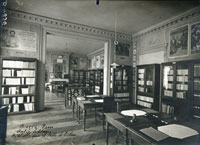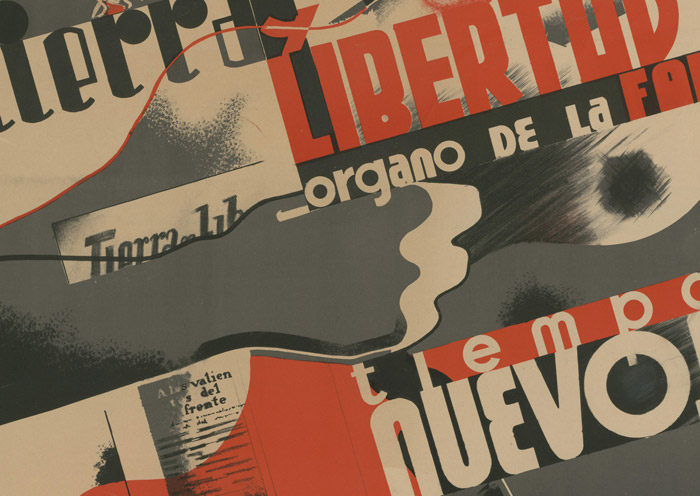History
La Contemporaine. Library, Archive and Museum of worlds of the contemporary era
La Contemporaine originated from a donation in 1917 of an exceptional private collection dating from 1914, which contained all types of documents relating to the First World War. The documents, including both visual and printed materials, were collected from a wide variety of sources and in many different languages. As a result, La Contemporaine is in possession of an incredibly rich collection on the First World War, one of the largest and most diverse in Europe.
La Contemporaine. Library, Archive and Museum of worlds of the contemporary era
La Contemporaine originated from a donation in 1917 of an exceptional private collection dating from 1914, which contained all types of documents relating to the First World War. The documents, including both visual and printed materials, were collected from a wide variety of sources and in many different languages. As a result, La Contemporaine is in possession of an incredibly rich collection on the First World War, one of the largest and most diverse in Europe.
 Louise et Henri Leblanc, 1917  Musée Leblanc,salle de lecture de la bibliothèque  Le Pavillon de la Reine,Bibliothèque et Musée de la Guerre.  Incendie au Château de Vincennes, 24 août 1944  Le Pavillon de la Reine après l'incendie d'août 194 |
1914 French industrialists Louise and Henri Leblanc take it upon themselves to collect as many documents as possible concerning the growing conflict in Europe. They collect books, reviews, press, correspondence, paintings, drawings, posters, photographs and objects amounting to more than 22,000 items. 1917 The Leblancs donate their collections to the French government. Following a proposal from parliament, the collections are linked to the Ministry of education with the goal of using them as a source of education for the general public as well as establishing a more scientific research center—a “laboratory for history". 1918 On the 11th of January 1918, a parliamentary decree validates the donation of the Leblanc collections to the government and on the 25th of February the Library-Museum of War (BMG) is created. 1924 The BMG moves into the Pavillon de la Reine at the Château de Vincennes. Camille Bloch, a French historian and archivist, becomes the director. 1934 The BMG becomes administratively linked to the University of Paris and is renamed the Bibliothèque de documentation internationale contemporaine (Library of international contemporary documentation.) This new designation emphasizes the academic direction brought by the Office of International Documentation, as well as the historian Pierre Renouvin, founder of the French school of international relations. 1944 The Pavillon de la Reine and part of the collections are destroyed in a fire set by the German forces on the 24th of August. 1948 The library relocates to Paris (5, rue Auguste Vacquerie). The collections continue to be stored in Vincennes. 1950 The collections of the museum are returned to the Pavillon de la Reine. 1968 Following the re-organization of the University of Paris, the BDIC becomes an intervarsity institution. While it operates independently it serves as a resource for four universities (Paris 1, Paris 2, Paris 8 and Paris 10) and representatives of these universities also sit on the board. 1970 The BDIC leaves Vincennes and moves to the campus of the new University of Paris Nanterre, its partner-institution. La Contemporaine settles into the building that it still shares with the University library. 1973 The museum collections are moved to the Hôtel national des Invalides in Paris. 1982 Because of its exceptional documentary heritage, the BDIC is officially named a CADIST (center for acquisition of scientific and technical information.) A pole of reference for national higher education, the BDIC is responsible for assuring that the fields of contemporary history and international relations are documented as comprehensively as possible. 2004 The BDIC becomes part of the network of organizations that are associated with the National Library of France (BnF). As such, the BDIC collaborates with the BnF on projects of acquisition, conservation, and digitization. 2007 Proposition : As part of the CPER (State-Région project contract) 2007-2013, the University of Nanterre receives funding allowing it to build a new building for the BDIC. It will bring together, in a same building, the museum and the library. 2012 The Labex « The past in the present : history, heritage and memory » carried by the House of Archeologie and Ethnologie René-Ginouvès, the BDIC and several other research teams (including the Political social sciences Institute) are selected under the 2nd wave of the Big loan Investments. 2018 The BDIC (Library of international contemporary documentation) becomes La contemporaine, library, archive and museum of worlds of the contemporary era. |









